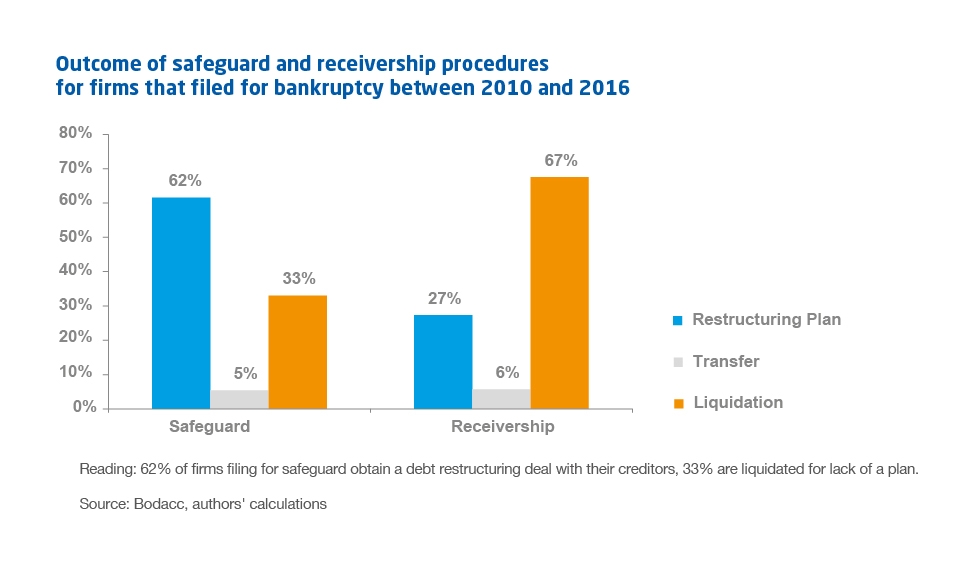
The numbers speak for themselves: firms that choose the safeguard procedure are better of than those that go into receivership. More than 62% of them obtain a debt restructuring agreement compared with only 27% of firms in receivership. There are several possible explanations for this 35% difference. It may reflect di erences in the observable characteristics of firms such as debt ratio, size, sector or geographical area and/or differences in the unobservable characteristics such as the personality of the manager. But it may also be the result of a better reputation of the safeguard procedure. Since firms under safeguard have a greater chance of survival, the opening of this procedure does not drive away stakeholders – customers, creditors, employees, suppliers – which in turn increases the firm's chances of survival. This report concludes that this reputation effect predominates. The effect of the observable characteristics is small (five points), and the one of the unobservable characteristics undetectable.
However, despite its success, few companies file for the safeguard procedure. This procedure represents on average only 6% of the restructuring procedures over the period 2008 and 2018. It is understandable that firms prefer confidential procedures more protective of their reputation such as the ad hoc mandate or conciliation. Yet it is regrettable that some firms that could use the safeguard procedure do not do so and end up in receivership. Better information and a clearer distinction between the safeguard and receivership procedures could help increase the use of this procedure. The forthcoming transposition of the European Directive on preventive procedures provides an opportunity for progress in this respect.





